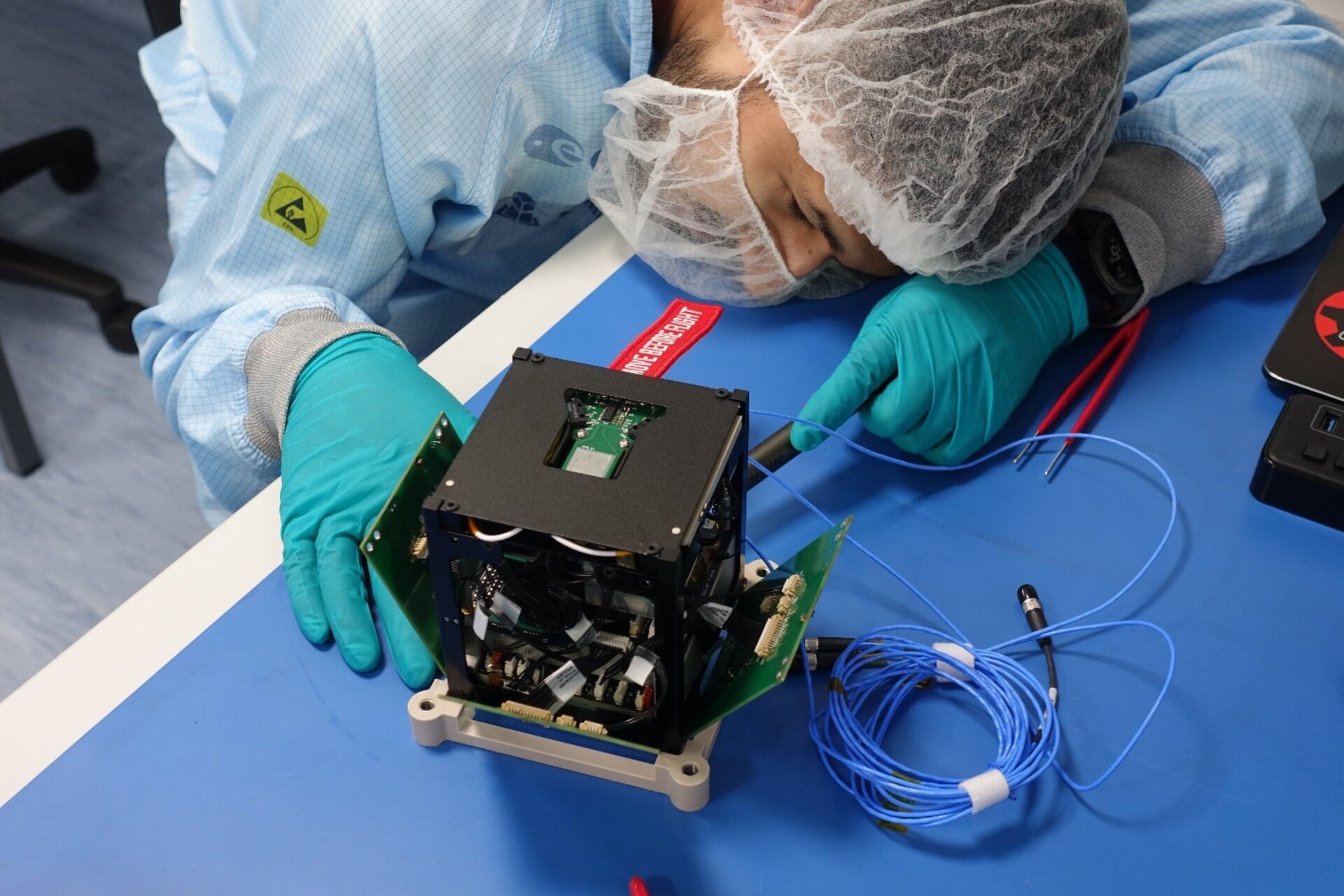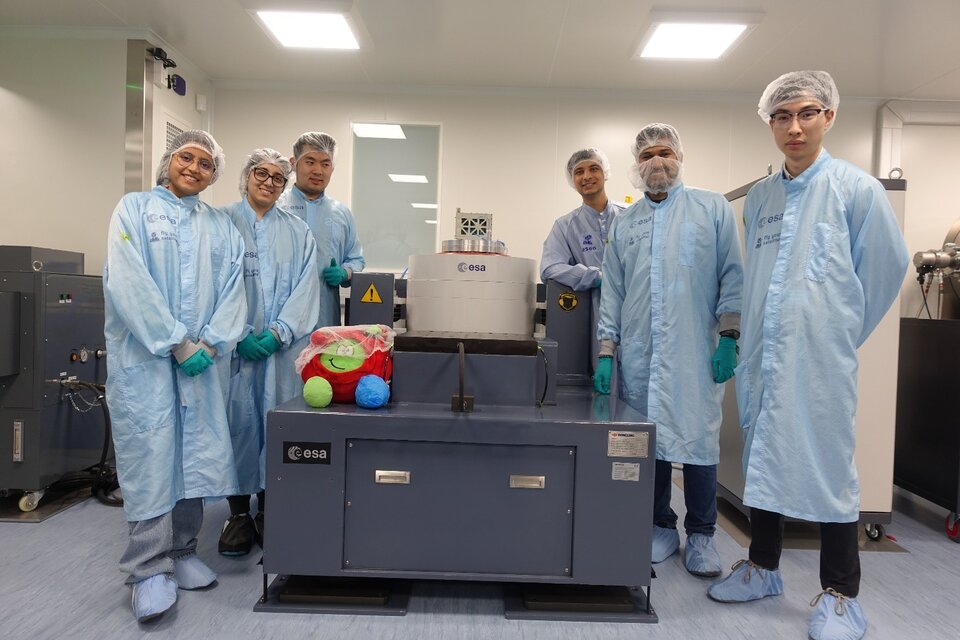ALEASAT Test Opportunity tests the limits of 1U CubeSat
ALEASAT – a 1U CubeSat Project built in collaboration of UBC (University of British Columbia) and the SFU (Simon Fraser University) Satellite Design Team – was selected for the February 2024 test window of the Fly Your Satellite! Test Opportunities. Following their selection, they successfully and participated to an extensive vibration test campaign from February 19th to 23rd, 2024, at the CubeSat Support Facility located at ESEC Redu, Belgium. The purpose of this campaign was to subject their CubeSat Engineering Model to mechanical loads to ensure its survival during the harsh environment of the launch phase. This campaign was a crucial milestone towards the Team's goal of launching a 1U CubeSat in the next years. A unique experience that enhanced their engineering skills and enthusiasm for space engineering.

The SFU-UBC CubeSat Team travelled from Canada to Belgium in pursuit of their goal to test their own designed and manufactured 1U CubeSat, entirely led by students. Having begun their project in January 2020, ALEASAT carries a unique payload composed of a camera that enables any amateur radio operator to request a photo of a specific area.
From February 19th to 23rd, the test campaign took place at the CubeSat Support Facility in ESEC, Belgium. The main objective of the campaign was to conduct a vibration test on the ALEASAT Engineering Model, which had undergone rigorous preparation during a two-day pre-campaign, including a fit check within the TestPod, inspection, as well as verification of mass and dimension. This part was essential to guarantee the safest and most efficient test possible.
The Team's efforts resulted in the successful readiness of ALEASAT, which was then ready for the imminent mechanical shaker test.
Using the electrodynamic shaker of the facility, the vibration test was carried out to analyse the impact of the stresses experienced by the satellite during launch. Despite meticulous preparation, the campaign was not immune to challenges. In particular, loosening of the camera was noted, and some parts of the primary structure woefully failed.
The test campaign can largely be considered as a success given the wealth of experience accumulated by the Team. From meticulous documentation to compliance with laboratory protocols, the SFU-UBC Team polished their proficiency in conducting high-quality test campaigns with the support of ESA Education expertise.
Moreover, this experience provided priceless insights into the complexity of their hardware, allowing a deeper understanding of the capabilities and limitations of their CubeSat hence traveling back to Canada with a bag of lessons learned which will be implemented as part of their project.
The outcomes of this study further underscore the harshness of the space environment, which necessitates the expertise of proficient individuals. The hands-on activity facing engineering challenges and the emphasis on test preparation will set the students towards their engineering journey, ready to make a significant impact in space exploration. Moreover, the teamwork and communication skills shown during the campaign boost their future careers. Overall, this comprehensive experience will pave the way for promising futures in the space industry.
To learn more about the programme, click here.



